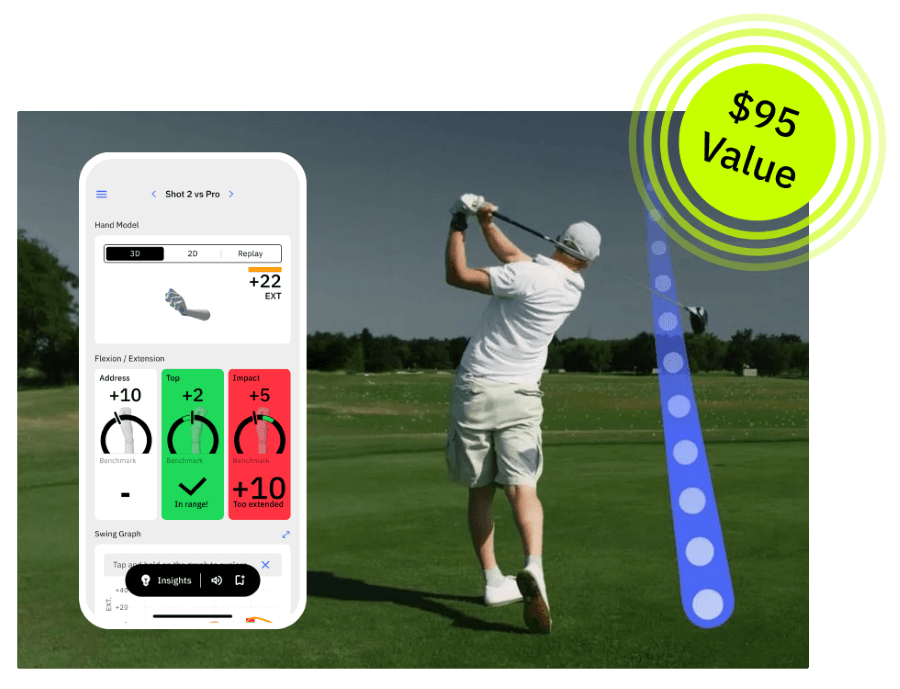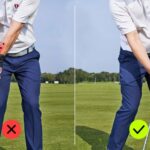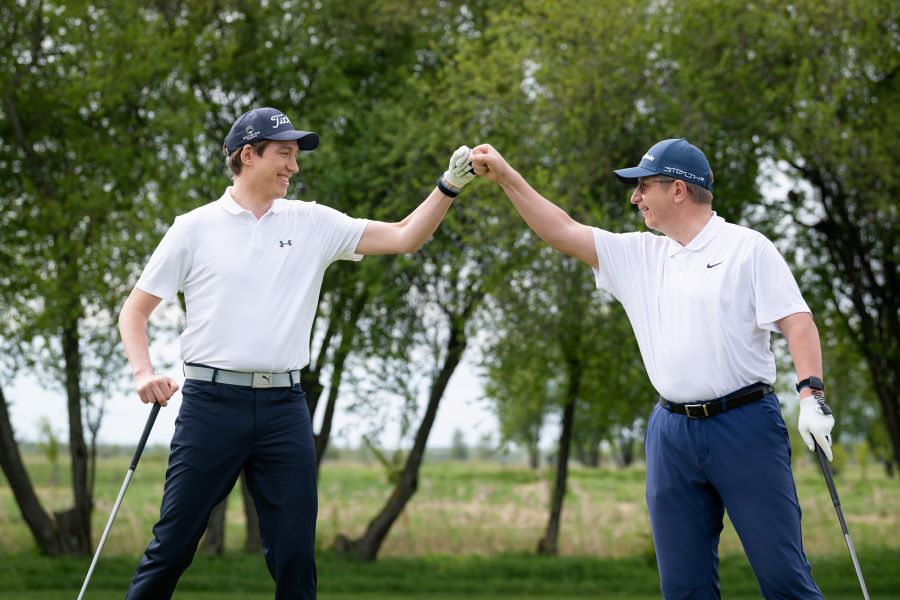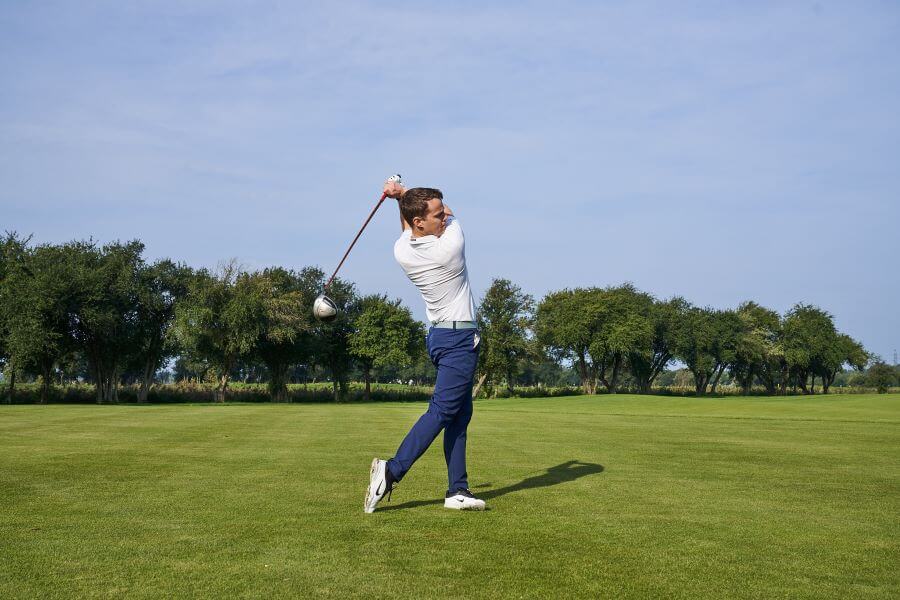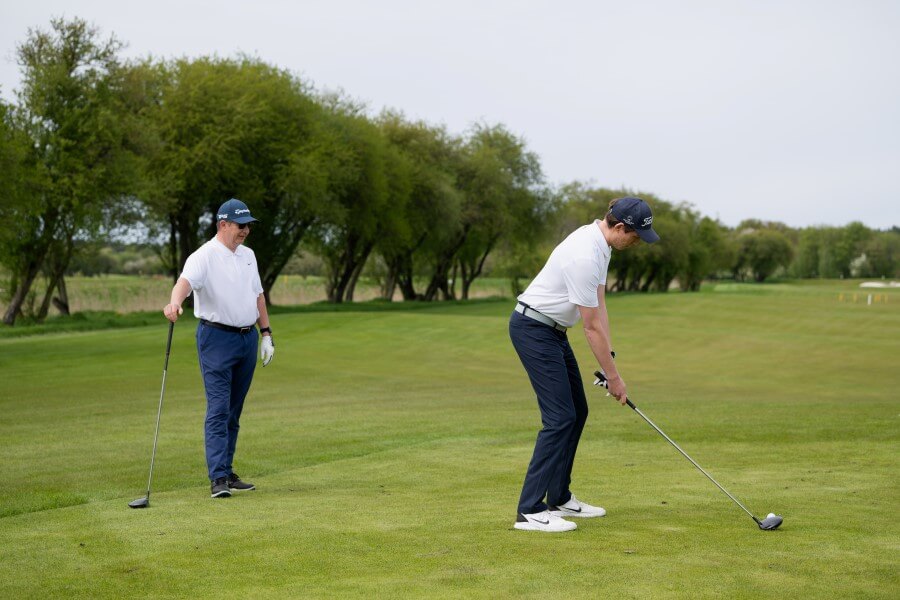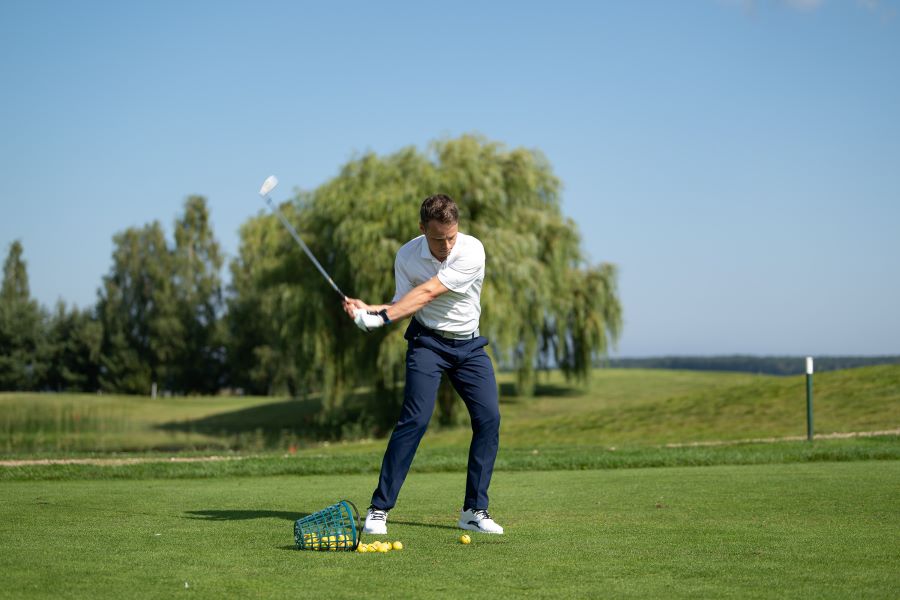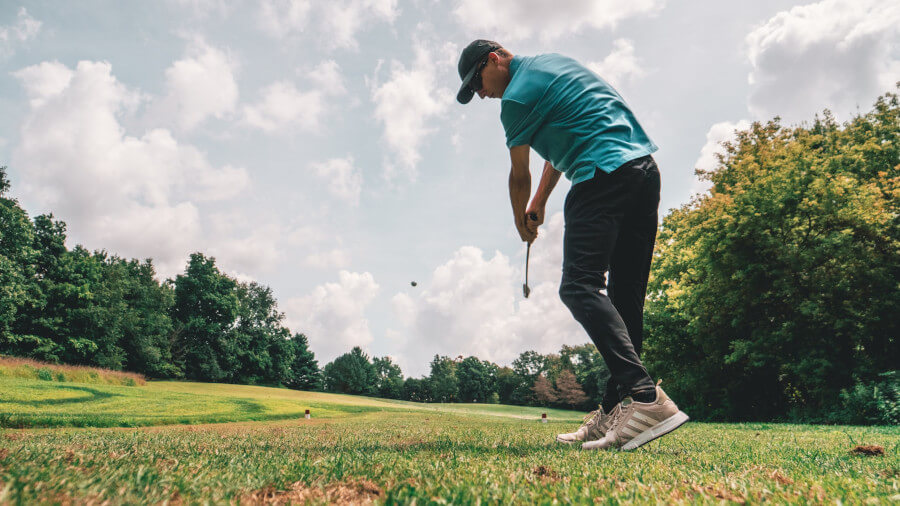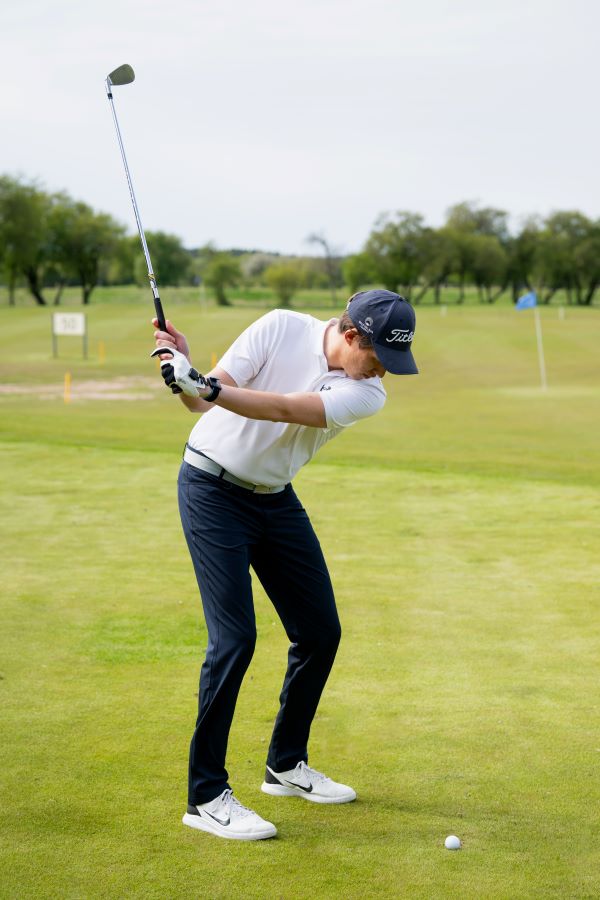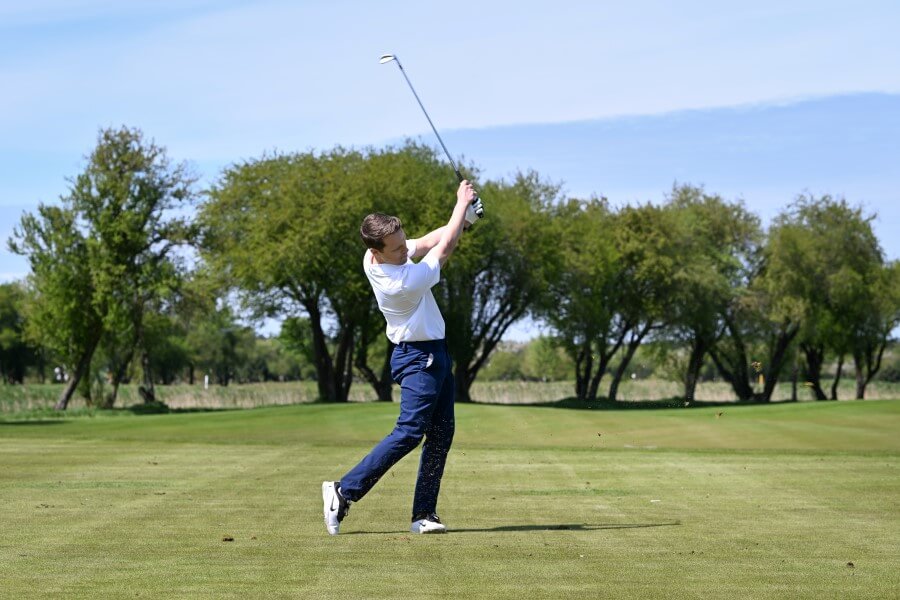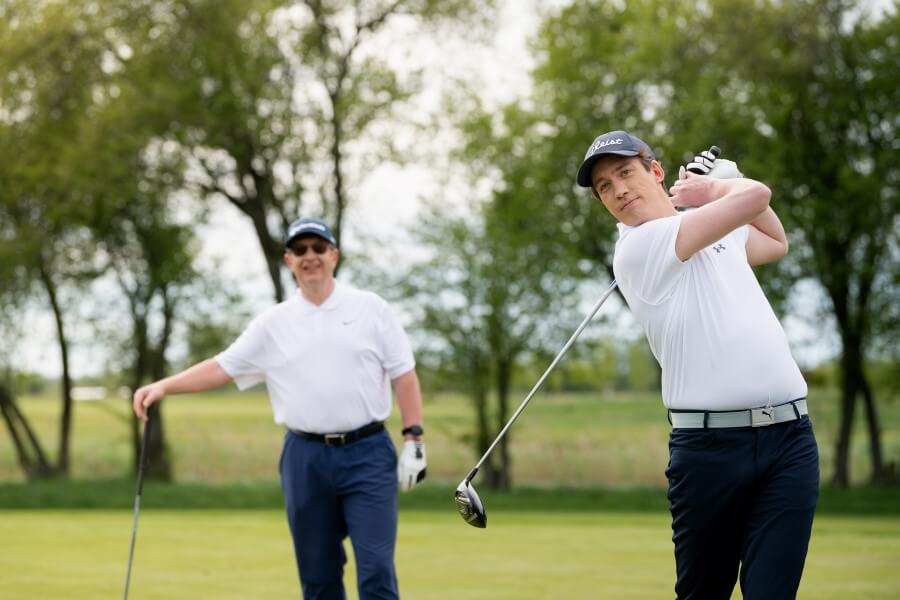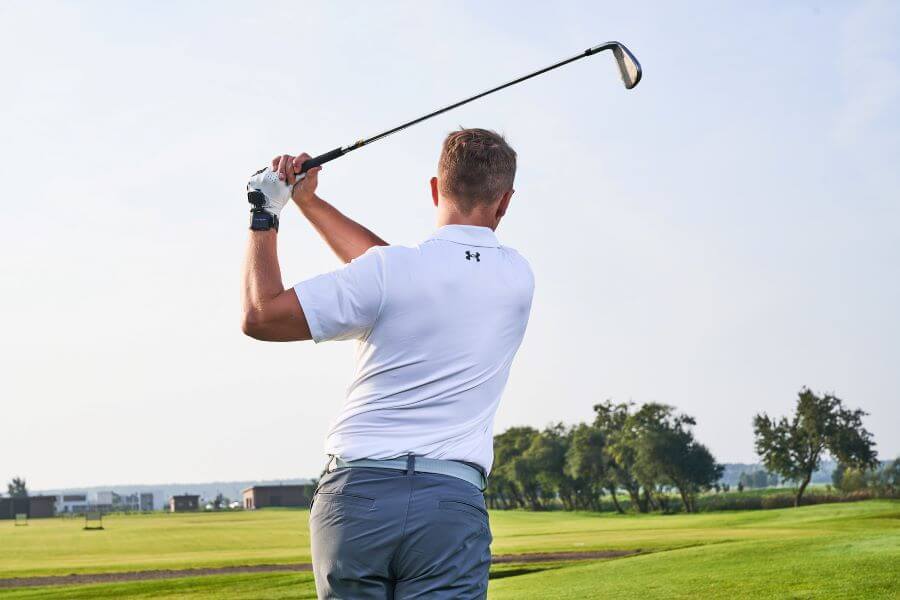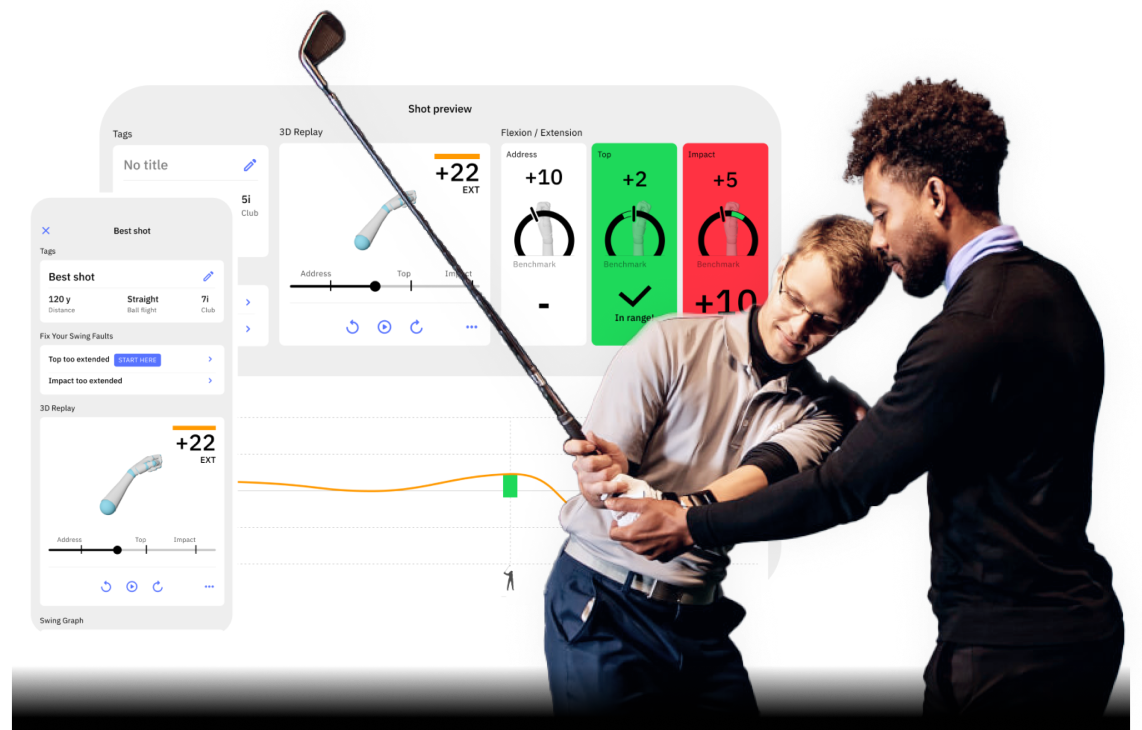Hit the Ball First, Then Divot: 5 Proven Steps & Drills That Work
One of the most natural instincts in golf is to try to help the ball into the air. It feels like you need to scoop or lift it, especially with irons and wedges.
But that instinct leads to some of the most common faults in the game: slowing the swing down, flipping the wrists, and hitting the ground before the ball, or not at all.
The key to solid contact is learning to compress the ball by striking it first, then taking a divot. Here’s how to hit the ball first, then divot.
Hit the Ball First, Then Divot (Key Takeaways)
Do you want to wait to read this entire article until you get to the driving range? We get it. For now, here are the key points you can take with you:
- Make sure the ball position is correct in your golf stance; it could be throwing off your chances of the ball-first, then-divot contact.
- Wrist angles should stay flat to slightly flexed at the top of the backswing. This lessens the chance of flipping the club at impact and hitting the divot first before contacting the ball.
- Wear your HackMotion as you work on hitting the ball first, then divot, to ensure your hands lead the clubhead, and the club travels down instead of up through the ball.
- Don’t leave the body out of it; proper rotation of the chest and lower body ensures the club travels through the ground the way it should.
Contents
5 Simple Steps to Hit Ball First, Then Divot
If your divot keeps happening before the golf ball, then it makes sense to work through these steps and drills. You’ll find more consistency, better distance, and more accuracy in your golf game.
1. Get the Ball Position Right
Having the ball positioned too far forward in your stance can make it difficult to hit the ball first, then the divot.
You have so much distance to travel to get the club to the forward part of your stance that you end up hitting the ground first.
For irons, play the ball in the center of your stance for most shots. You’ll have an easier time creating that downward strike.
Think about it this way: when you hit a driver, you play the ball forward to catch it on the upswing.
When you play with an iron or a wedge, you want to make sure it’s middle and you strike as part of the downswing.
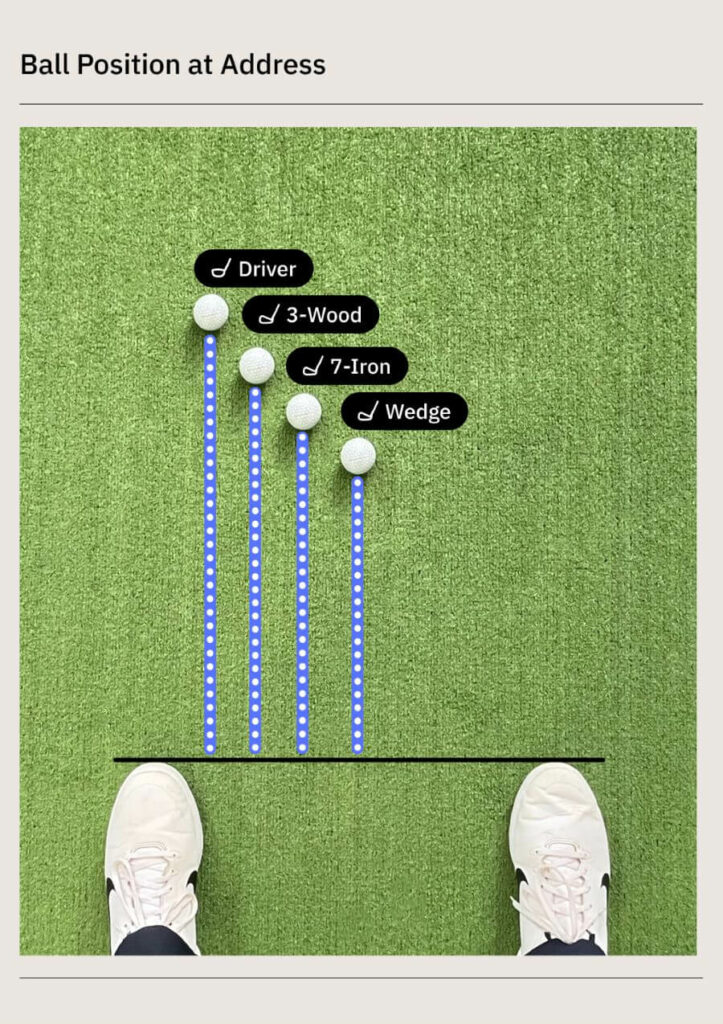
2. Master Forward Shaft Lean to Strike the Ball First
If you’re hitting behind the ball, the problem often isn’t just your ball position, it’s how your wrists and hands are delivering the club into impact.
To strike the ball first and compress it properly, you need forward shaft lean with a flexed lead wrist, not a flipped or scooping motion.
Most golfers don’t realize that the wrists must actually be less extended at impact than they were at setup. It feels strange at first, but it’s exactly what the best ball strikers do.
Try the Alignment Stick Shaft Lean Drill to get this down:
Alignment Stick Shaft Lean Drill – Step by Step
- Stick an alignment rod down the grip so it runs up past your lead hip.
- Hold both the stick and the club together.
- Make small practice swings, keeping the stick away from your lead side (hip/ribs).
- Focus on keeping your hands forward through impact—no early release.
- Freeze your follow-through with the handle ahead and the wrists stable.
- Once you’re comfortable, hit short shots while keeping the stick off your side.
3. Maintain the Correct Wrist Position Throughout the Swing
At the top of an average golf swing, the lead wrist is extended or cupped.
This position opens the clubface, and it typically occurs as a result of mistakes made in the backswing.
At the top of your backswing, you want to have a flat or slightly flexed lead wrist. This position allows for better body rotation through impact and a square clubface at the time of the strike.
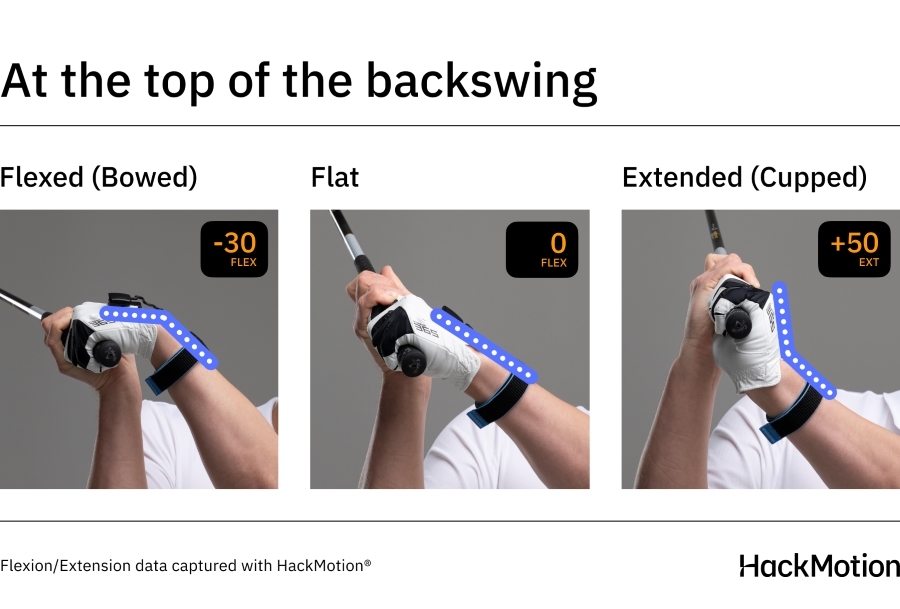
Let’s say the lead wrist is extended 25 degrees at the top of the backswing.
That means as part of the downswing, you’ll have to lose all of that extension to get the lead wrist to a flat or slightly flexed point.
That’s a lot of work to do!
4. Use the Body to Help You
Inconsistency in ball striking is often caused by leaving the body out of the swing. Proper body rotation helps you strike the ball cleanly and get that ball first, then divot contact.
Take a look at your takeaway. Are you incorporating the lower body and shoulders as part of your turnback? Do the hands and wrists just take over?
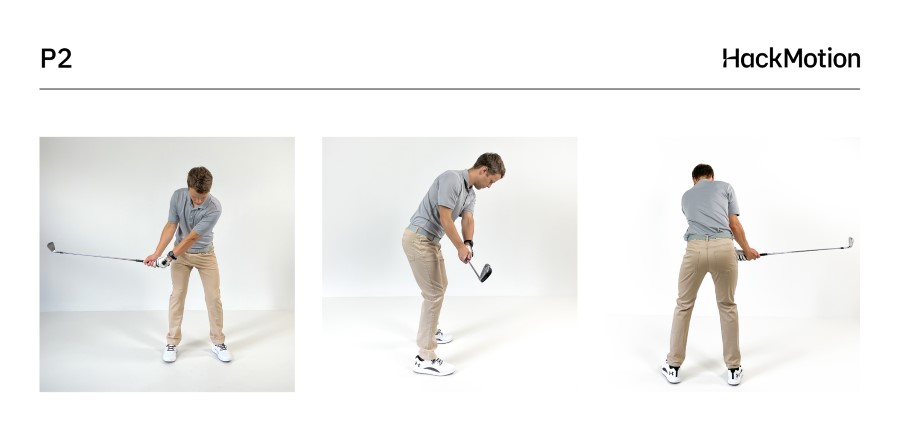
Focusing on turning your hips and chest through the shot allows your weight to shift onto the lead leg. This weight shift ensures that the club will strike down on the ball rather than bottoming out too early.
Your body makes the swing more of a rotation and not just a “slap” that is controlled by the hands and wrists.
5. Control the Low Point of the Swing
The low point of an amateur golfer’s swing is often behind the ball, which causes ground first rather than ball contact.
To make sure you have the correct low point in your swing, consider working on a low point drill where you shift your weight forward and make sure your hands are leading the club at impact.
This slight weight shift to the lead side at setup can help you make contact with the ball as a downward strike.
The low point control drill from Tyler Ferrell lets you experiment with some different positions and how you should work on tweaking your low point control.
Drills to Help Hit Ball First, Then Divot Contact
To hit more golf shots where you strike the ball first than the divot, these are a few of the best drills to practice.
Line Drill
This is one of the best ball-striking drills you can do. It teaches you to control where your club contacts the ground and helps develop forward shaft lean and proper low point control.
Line Drill – Step by Step
- Spray or draw a straight line on the grass or mat.
- Place the ball directly on top of the line.
- Swing and try to contact the ground just after the line—never before it.
- Keep 80–90% of your weight on your lead side through impact.
- Monitor your wrist angle with HackMotion; the lead wrist should be more flexed at impact than at setup.
HackMotion Release Drill
The Release Drill teaches you how to train the critical “P7 to impact” zone, ensuring your hands stay forward and your lead wrist doesn’t flip.
A great drill for building consistent, compressed contact.
Perfect Your Release with HackMotion
Fine-tune your release for consistent contact. Start with a short swing to master control before adding power.
HackMotion Release Drill – Step by Step
- Start with a shortened swing, just the downswing segment (club parallel to ground into impact).
- Focus on keeping your hands slightly forward through the strike.
- Use HackMotion to monitor lead wrist flexion and ensure you’re in the green zone at impact.
- Perform 10 reps before increasing swing length or speed.
- Feel the clubhead lag behind your hands, this is your key to forward shaft lean.
Motorcycle Drill
The Motorcycle Drill trains you to add lead wrist flexion in the downswing.
It’s one of the best ways to stop leaving the clubface open, and to hit ball-first, compressed shots.
Motorcycle Drill – Master Wrist Flexion in the Downswing
Focus on continuously adding flexion until the club reaches parallel, then smoothly complete your swing.
HackMotion Motorcycle Drill – Step by Step:
- Address the ball as normal and start your backswing.
- On the downswing, flex your lead wrist (like revving a motorcycle) to add bowing.
- Reach maximum flexion by the time the club is parallel to the ground (P6).
- Maintain that flexion into and through impact.
- Use HackMotion to monitor and refine the exact amount of flexion, too much or too little can lead to mishits.
Final Thoughts
Hitting behind the ball and striking the ground first causes you a loss of distance and sometimes a lack of control in the ball’s flight.
Wear your HackMotion to make sure your wrist position is correct at the top of the backswing and then again at impact. If you notice too much extension in the lead wrist, it could cause you to flip just before impact and get inconsistent results.
